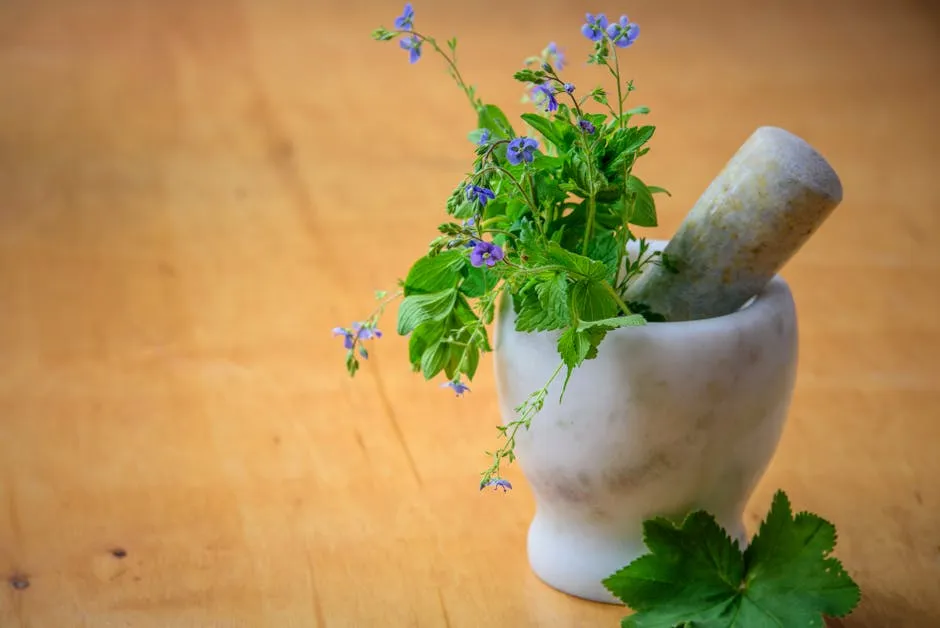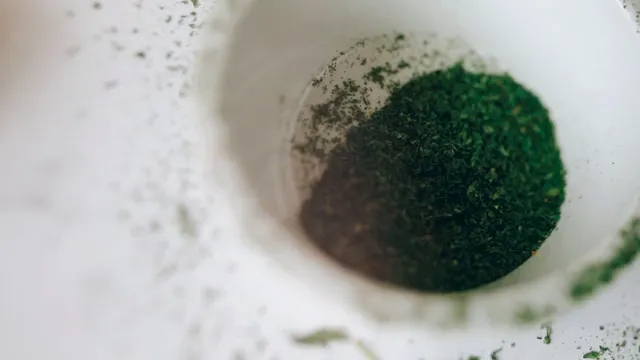

The Ruda Plant: Nature’s Potent Healer or Poisonous Peril?
Introduction
In the realm of herbal remedies, few plants stir as much fascination as the ruda plant, scientifically known as Ruta graveolens. With a rich history steeped in folklore, this herb is celebrated for its medicinal properties and whispered warnings. It’s a plant that’s truly a double-edged sword, captivating herbalists and health enthusiasts alike.
Historically, ruda has been a trusted ally in traditional medicine, addressing ailments from digestive woes to muscle pain. However, it also carries a reputation for causing trouble if not used with care. One moment it’s soothing your stomach, and the next, it could leave you questioning your life choices. Quite the drama, right?
So, what makes the ruda plant so special? Is it genuinely a miracle cure, or is there a shadow lurking behind its leaves? In this article, we’ll investigate the various facets of the ruda plant. We’ll uncover its uses, benefits, potential side effects, and safety precautions. By the time you finish reading, you’ll gain a well-rounded understanding of this intriguing herb. You’ll know whether ruda deserves a coveted spot in your herbal toolkit or if it’s best to keep it at arm’s length.
Prepare yourself for a blend of information, history, and a sprinkle of wit. Let’s find out whether this potent herb is a hidden gem or just a pretty face with a dangerous side!

Mechanism of Action
The ruda plant, scientifically known as Ruta graveolens, contains several active compounds that interact with the body in intriguing ways. The key players here are flavonoids, essential oils, and alkaloids. These compounds work together to provide various therapeutic effects.
When ingested, ruda’s chemicals are believed to decrease muscle contractions. This can be particularly beneficial for those suffering from cramps or muscle spasms. Additionally, these compounds exhibit anti-inflammatory properties. By reducing inflammation, ruda may help alleviate pain associated with conditions like arthritis and headaches.
Speaking of inflammation, why not explore ways to tackle it naturally? Our Anti-Inflammatory Cookbook is packed with delicious recipes that can help reduce inflammation while tantalizing your taste buds. Who said healing food can’t be delicious?
But wait, there’s more! Ruda also influences digestive health. It stimulates the production of digestive juices, which can aid in alleviating stomach upset and promoting appetite. Essentially, ruda acts as a multitasker, addressing both discomfort and inflammation simultaneously.
However, the action of ruda’s compounds isn’t limited to just physical ailments. They may also have a calming effect on the nervous system. This can be particularly useful for reducing anxiety and stress. The combination of these physiological effects makes the ruda plant a unique contender in the world of herbal remedies.
If you’re looking to enhance your relaxation routine, consider pairing ruda with an Aromatherapy Diffuser. It can help create a serene environment, perfect for unwinding after a long day!

In summary, ruda’s active compounds interact with the body in multiple ways, targeting muscles, inflammation, and even mood. It’s a fascinating example of how nature provides solutions to common ailments.
Side Effects and Precautions
While ruda may seem like a magical herb, it’s important to tread carefully. This plant is not without its pitfalls. Common side effects include stomach irritation and mood changes. You might find yourself feeling a bit queasy or even experiencing sleep disturbances. Not exactly the blissful herbal experience you were hoping for, right?
Now, let’s talk serious. In medicinal doses, ruda can cause significant issues. There’s a risk of kidney and liver damage, which can be life-threatening. A little ruda might help with that headache, but too much could land you in hot water.
While you’re considering safety, it might be a good idea to stock up on natural pain relief solutions. Check out our Natural Pain Relief Patches for those days when discomfort strikes unexpectedly!
Pregnant or breastfeeding? Ruda is a no-go. It can cause uterine contractions, leading to potential miscarriage. So, if you’re expecting or nursing, it’s best to steer clear of this herb.
And remember, those with existing kidney or liver problems should avoid ruda completely. It’s crucial to consult a healthcare professional before considering this herb, especially if you’re on medication or have underlying health concerns.
In short, ruda may offer benefits, but it comes with a laundry list of side effects and precautions. Prioritize your health over herbal adventures!

Interactions and Dosing
When it comes to the ruda plant, knowing its interactions with other medications is vital. Ruda may amplify the effects of certain drugs, especially those that increase sun sensitivity. This can lead to an increased risk of sunburn or skin reactions. If you’re on medications like amitriptyline or ciprofloxacin, exercise caution.
Dosing ruda can be tricky. There’s no standard guideline, and doses can vary widely based on age, health, and other factors. Because of this variability, it’s essential to consult a healthcare professional before using ruda. They can help determine a safe approach tailored to your specific needs.
If you decide to give ruda a shot, start with small amounts. Monitor how your body reacts. If you experience any adverse effects, it’s best to discontinue use immediately.
When it comes to herbal remedies, having the right tools can make a world of difference. Consider investing in a Home Herbal Medicine Kit to help you navigate your herbal journey with confidence!

Conclusion
The ruda plant is a complex herb with a rich history and a myriad of uses. While its active compounds offer potential benefits, it’s crucial to weigh these against the risks. Side effects ranging from mild stomach irritation to severe kidney damage are serious considerations.
In modern herbalism, ruda occupies a unique space. It can be both a potent healer and a source of caution. For those curious about its benefits, informed decisions are key. The ruda plant can indeed be a valuable addition to your herbal toolkit, but only when used wisely. Always consult a healthcare professional before diving into the world of ruda. Your health deserves the utmost care!

FAQs
Is the ruda plant safe to use?
Ruda can be safe in small amounts as a culinary herb, but it’s unsafe in medicinal doses due to potential side effects and serious health risks. Always consult a healthcare professional before use.
What are the common forms of ruda used?
Ruda is commonly used as a tea, essential oil, or in topical applications. It may also be found in capsules or tinctures.
Can I grow ruda at home?
Absolutely! Ruda can be grown at home in a garden or in pots. It thrives in well-drained soil and sunny locations.
What should I do if I experience side effects?
If you experience side effects from ruda, discontinue use immediately and consult a healthcare professional. It’s important to address any adverse reactions promptly.
Overview of the Ruda Plant
Scientific Classification
The ruda plant, scientifically known as Ruta graveolens, belongs to the Rutaceae family. This family includes a variety of aromatic herbs, often featuring citrus-like scents. Ruda is quite distinct, with its bluish-green leaves and small yellow flowers. It’s no wonder this plant has sparked interest among herbalists and gardeners alike!
Common Names
Ruda is known by many names across different cultures. You might hear it referred to as Common Rue, Herb-of-Grace, or even Garden Rue. Other names include German Rue, Herbe de Grâces, and Rue Fétide. Each name carries a history, reflecting the plant’s widespread use and significance throughout time. It’s the kind of plant that would have a fabulous Instagram bio—”Ruda: The herb with multiple personalities!”
Historical Context
Historically, the ruda plant has held a prominent place in traditional medicine. Ancient Greeks and Romans valued it for its healing properties, often using it to treat ailments such as digestive issues and infections. It was considered a protective herb, thought to ward off evil spirits. Can you imagine carrying a sprig of ruda to ward off negativity? Talk about a natural bodyguard!
In medieval times, ruda became a staple in herbal remedies. It was used to treat various conditions, from respiratory troubles to muscle pain. Its reputation as a cure-all was well established, although it often came with warnings about its toxicity. Fast forward to today, and while we admire its historical significance, we must also approach ruda with a careful mindset.
In summary, the ruda plant is not just a pretty leaf; it’s a herb steeped in history and mystery. Its scientific classification, common names, and historical context reveal a fascinating journey through time. Whether revered for its medicinal properties or regarded cautiously, the ruda plant remains a captivating subject in the world of herbalism.

If you’re interested in the uses and benefits of the ruda plant, you can learn more about it here.
While you’re exploring herbal remedies, don’t forget to check out our Herbal Remedies Book for more insights into the world of natural healing!
Please let us know what you think about our content by leaving a comment down below!
Thank you for reading till here 🙂
All images from Pexels



